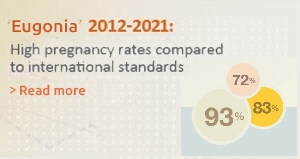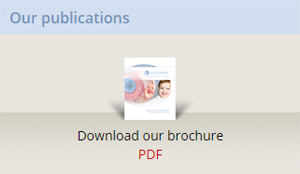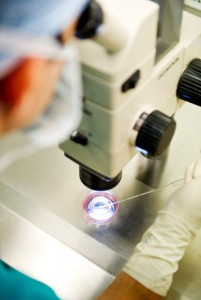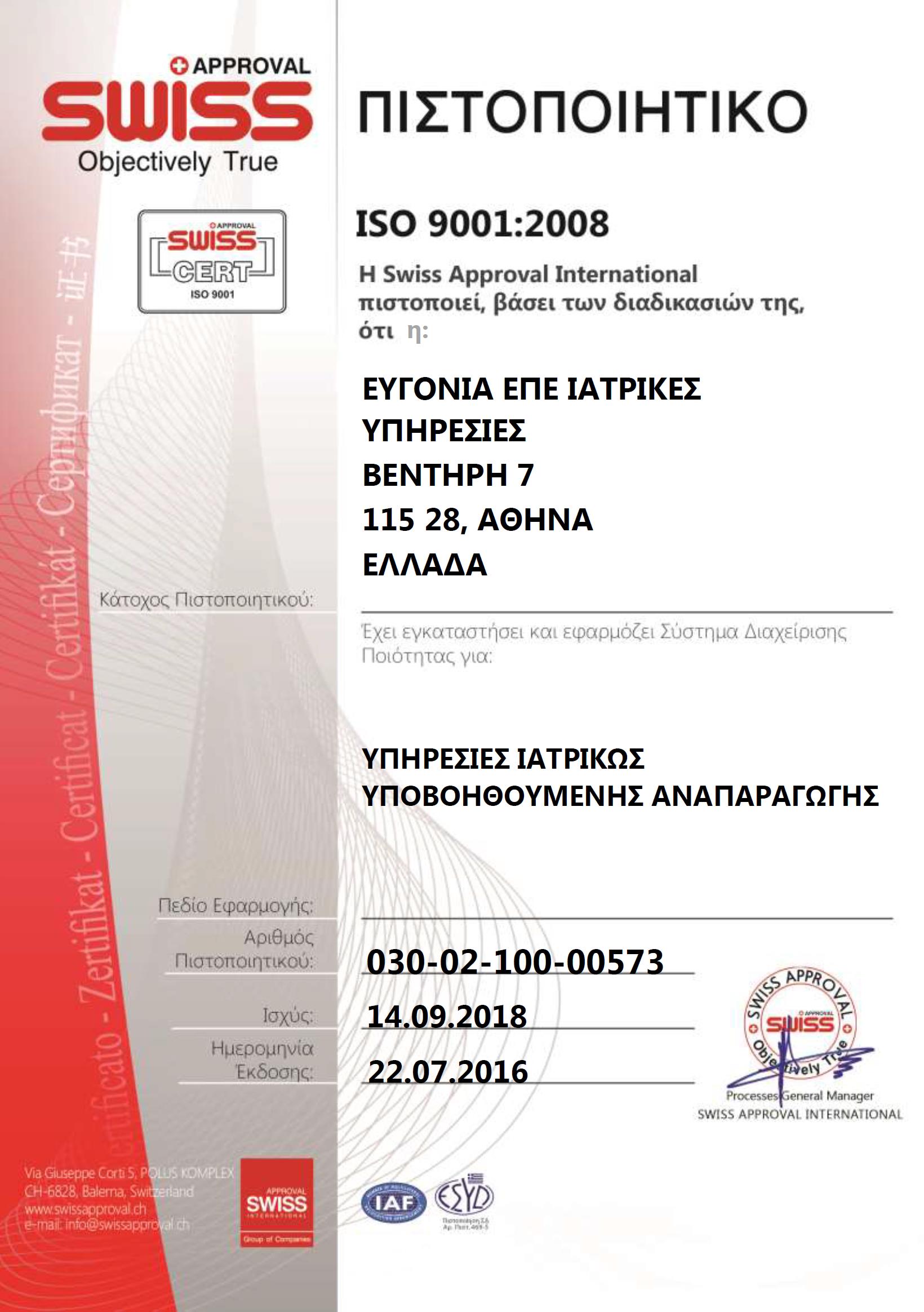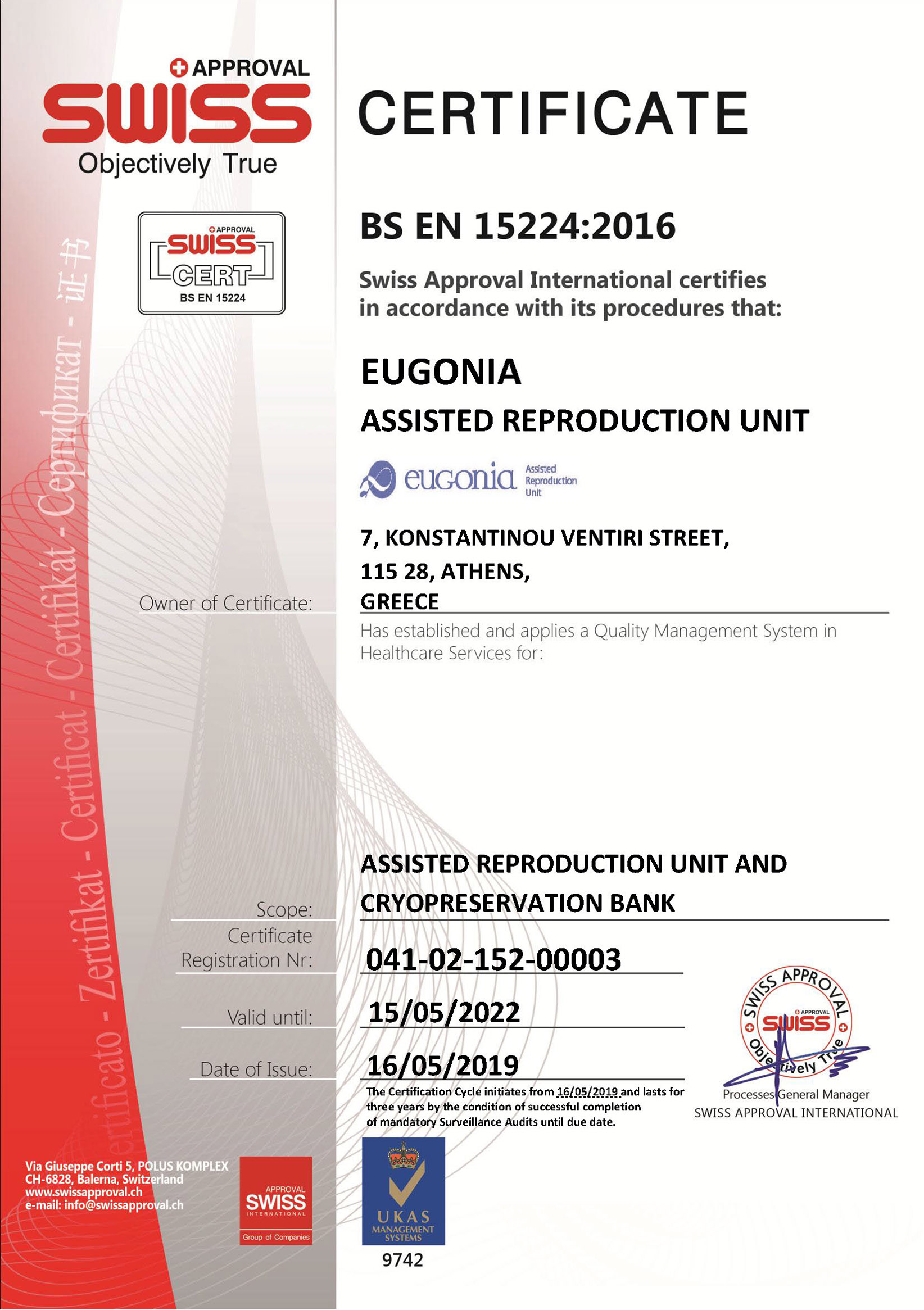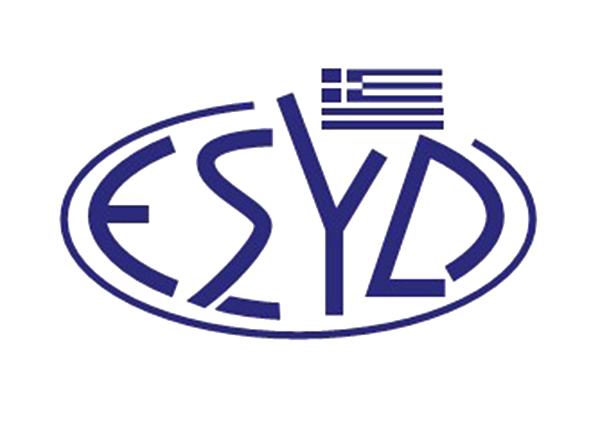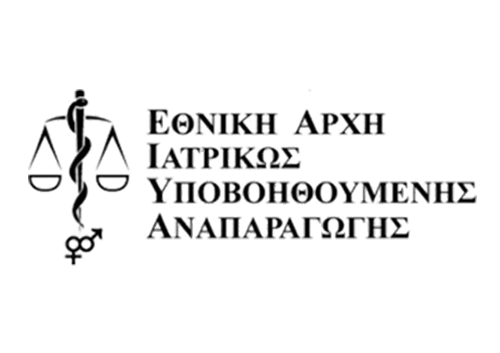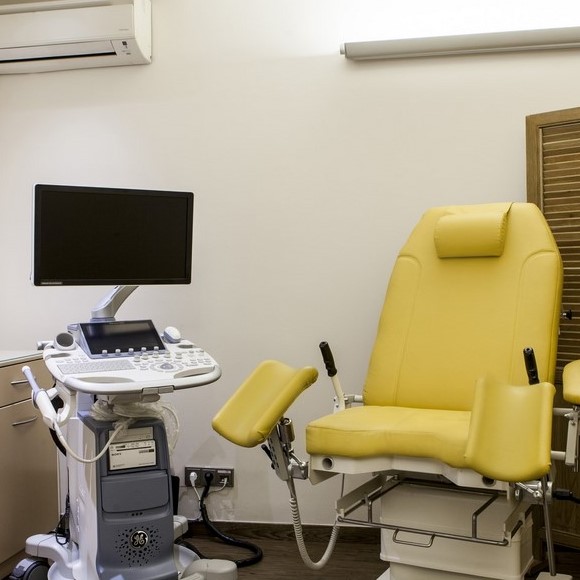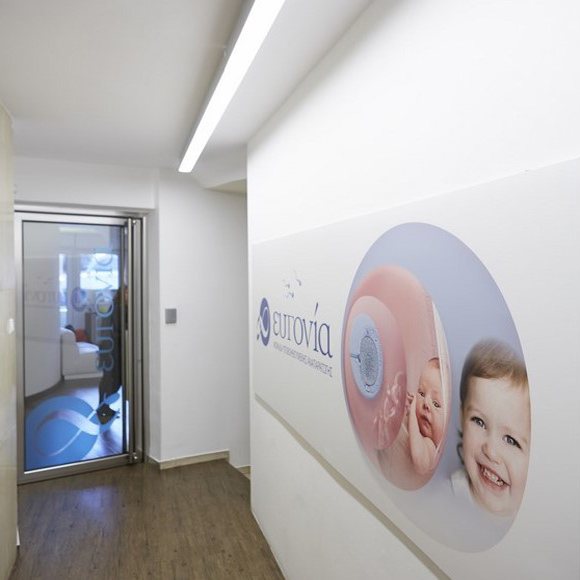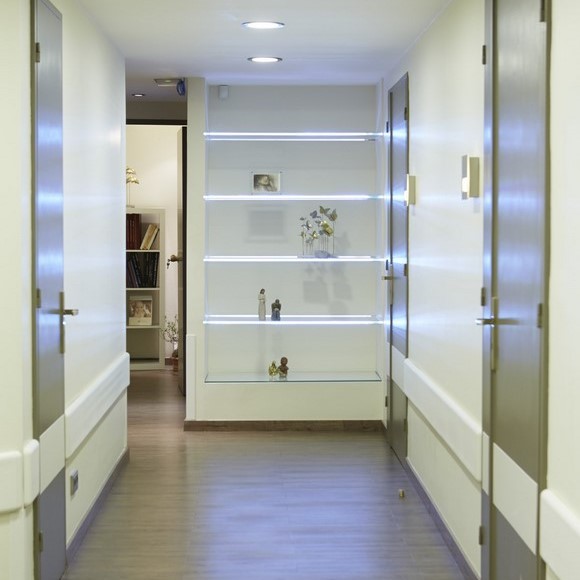For many couples with fertility problems, in vitro fertilization (IVF) is the best solution in order to achieve a pregnancy. IVF can overcome many causes of infertility, such as mild semen problems, endometriosis, tubal issues or unknown causes. The oocytes are fertilised by the spermatozoa in the laboratory, either by the technique of conventional in vitro fertilization (IVF) or by intra-cytoplasmic sperm injection (ICSI).
IVF History
Robert G. Edwards, became the most famous biologist of his time, when he announced on the 25th of July 1978, Louise Brown’s birth, the first “Test-tube baby” in England, together with obstetrician Patrick Steptoe and the midwife Jane Purdie. Since then, developments in the field have been rapid: in 1992 the first successful fertilization with ICSI was announced (Palermo) as well as its variations, MESA (Silber & Asch, 1992) and TESE (Schoyssman, 1993). In Greece, the first birth via IVF was achieved in 1982 and it was the 13th child was born worldwide.
Stages of IVF treatment- Procedure
Treatment with IVF consists of the following stages:
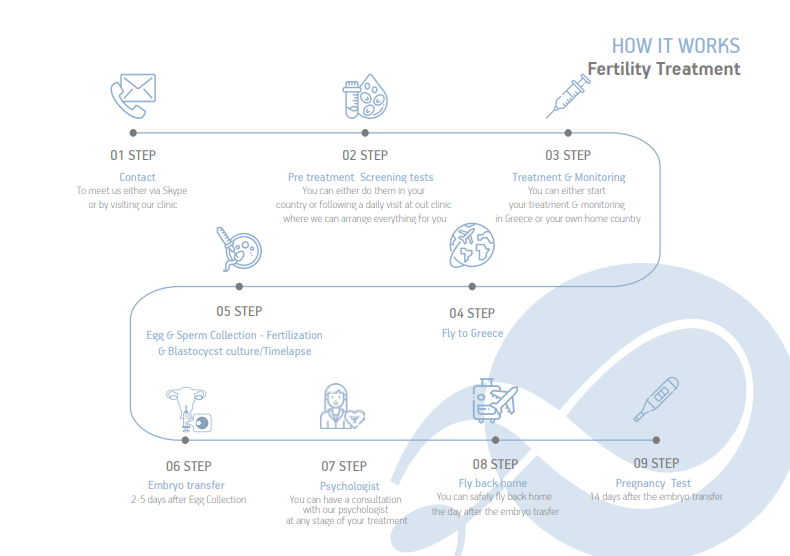
- Investigation and infertility diagnosis.
- Recommended tests before treatment.
- Ovarian stimulation (12-14 days). We choose the most appropriate protocol based on each woman’s cycle, age and history.
- Monitoring of the cycle with ultrasound and blood tests every 2-3 days in order to optimize the dosage of the drugs.
- Induction of the final oocytes’ maturation. It’s the final drug injection that will induce the final maturation of the oocytes and ovulation.
- Oocyte retrieval (egg collection). It is performed transvaginally, in the presence of an anesthetist. It is short (10-30 minutes) and practically painless due to the light sedation administered.
- Sperm collection. In cases of azoospermia, testicular biopsy is recommended (TESE)
- Egg fertilization from the spermatozoa. In this laboratory stage, the oocytes come into contact with the spermatozoa. When semen has normal parameters, conventional IVF is advised. As the the least invasive method for the eggs. For many couples with poor sperm quality, where spermatozoa are unable to fertilize the oocyte unassisted, intracytoplasmic sperm injection (ICSI) is selected. This method allows successful fertilization even in cases of severe oligoasthenoteratospermia. The following day the embryologist checks and records the percentage of normally fertilized eggs.
- Embryo culture. After fertilization, embryos are cultured in the laboratory for 2 to 6 days, until the blastocyst stage. Proper division of the cells is a basic criterion for their quality.
- Embryo transfer includes the selection and transfer of the best embryos into the uterus. It is performed two to six days after the oocyte retrieval, using a thin catheter. It is a painless procedure that does not require anesthesia.
- Pregnancy test (blood test for the determination of β-chorionic gonadotropin hormone, performed 13 days after the embryo transfer)
- Clinical pregnancy test with a transvaginal ultrasound (4 weeks after embryo transfer).
- Ongoing pregnancy test on the 12th week of pregnancy, i.e. 10 weeks after embryo transfer.
Optional Procedures (Depending on patient’s history)
- Embryo or egg freezing Freezing allows conservation of oocytes, sperm and embryos for a prolonged period of time (five years or more). With the application of the new freezing method, vitrification, survival rates and pregnancy success rates are higher than the older method of progressively controlled freezing
- EmbryoGlue. It is a specialized culture medium containing hyaluronic acid during the embryo transfer process, which aids in the attachment of the embryo to the endometrium.
- Assisted Hatching is a technique applied in the laboratory and facilitates the hatching of the embryo. It is suggested when the egg’s zona pelucida is thick or hard, in cryopreserved embryos or in women with previous failed attempts
Preimplantation genetic diagnosis (PGD) for the detection of genetic abnormalities and Preimplantation genetic screening (PGS) with the new technique of array CGH or NGS, may be used if considered necessary
Read also:
Fertilisation in Natural cycle





